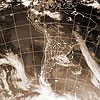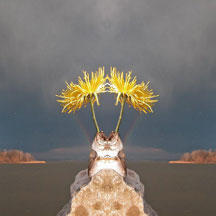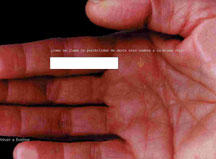 ::NET.TEN:: \\Online Selections//
::NET.TEN:: \\Online Selections//BY: Gustavo Romano
This month Net Art Review invites Gustavo Romano, a visual artist based in Argentina who has developed works in various media including installation, video, actions, and online art to recommend ten online resources to our readers.
Click here to read Romano's recommendations
 FEATURE.INTERVIEW: Lora McPhail and Michael Jantzen interview electronic artist Ellen Jantzen about her new body of work entitled "Artificial Evolution"
FEATURE.INTERVIEW: Lora McPhail and Michael Jantzen interview electronic artist Ellen Jantzen about her new body of work entitled "Artificial Evolution"L&M: What do you think are some of the most important things in life that inspire you to do the work that you do? How do you develop your hybridizations and/or elemental relationships?
EJ: First of all, I create to give meaning to my life. I draw inspiration from the natural world; rock formations, seedpods, nests; shapes that resonate with reproduction, growth and repetition. I feel compelled to work in ways that create meaning. I pull from somewhere deep inside, not from a purely analytical space, so my hybridizations are very spontaneous and uncalculated. They are developed subconsciously then meaning is assigned as I refine and title each piece.
Click here to read the entire feature
 FEATURE.REVIEW: Reflections on Conceptual Art and its relation to New Media, a month long conversation at Empyre
FEATURE.REVIEW: Reflections on Conceptual Art and its relation to New Media, a month long conversation at Empyre BY: Eduardo Navas
I was a guest speaker on Empyre during the month of April 2005. The following text is a revision of two particular postings on Conceptual art, which I here use as launching platforms to reflect on the long debate that took place between Raul Ferrera Balanquet (CU/MX), Kate Southworth and Patrick Simons(UK), and myself. Other invited guests included Lucrezia Cippitelli (IT), Heidi Figueroa Sarriera (PR), Raquel Herrera Ferrer (ES), Lucas Bambozzi (BR), Andres Burbano (CO), and Joeser Álvarez.
The conversation was fruitful in various ways, ranging from abstract theoretical propositions to more personal statements. The online exchange proved to be one of the most important experiences for me until now, because I learned that colonial ideology is more powerful than I expected. It is thanks to Raul's intervention (this is how he considered his writing) that I realized this shortly after the discussion came to a close. Such realization will be the subject of reflection for the second part of this series. In this first part I will focus on the premise proposed by Christina McPhee for the month long conversation.
Click here to read the entire feature
 In an ongoing collaboration, this month NAR features another .PDF originally published in a minima:: No.12, a media and contemporary art publication based in Spain. This month features "Subjective, intimate and public" by Marina Zerbarini.
In an ongoing collaboration, this month NAR features another .PDF originally published in a minima:: No.12, a media and contemporary art publication based in Spain. This month features "Subjective, intimate and public" by Marina Zerbarini.The idea that only a great amount of information inflowing in a dynamic and random form could give rise to which I looked for was achieved using about 400 files, only some of which, never foreseeable nor programmable are seen by the observer. At the moment it is a "work in progress" in its 1st phase. It is a narrative project for the Internet, based on short stories by James Joyce, in which I develop the concepts of hypertext, randomness, participation and simulation of living and dynamic systems in real time. Through hypertext and by creating a matrix of potential texts/images/sounds, only some of which will be updated as a result of the interaction with users, we try to make possible a different movement, a reading transformed into a set of problems, a reading/writing which multiplies the production of senses, the reader can interpret, arrange and structure it as regards their perception and production.
"Eveline" by Joyce narrates the story of a young woman who lives with her family in Dublin. The appearance of a man who would take her to live in Buenos Aires sets in motion her fantasies on the happy life she could have, in opposition to her reality and the relationship with her father. The unexpected end, if we can call it an end when referring to Joyce's writing, is open for the reader's interpretative creativity. "A sad case" is about the life of a lone man, who has a relation with a married woman spontaneously. The questions dealing with the reason why by Mr. Duffy interrupts that relationship do not have enough answers.
Two histories that are related semantically to this other Eveline, a problem of gender, vast in its plurality, a visual metaphor of several readings. It raises questions related to affection, encounters, communication, passage spaces, the place of the body, to sum up: delocalised subjectivity on a network.
Click here to download the .PDF file
